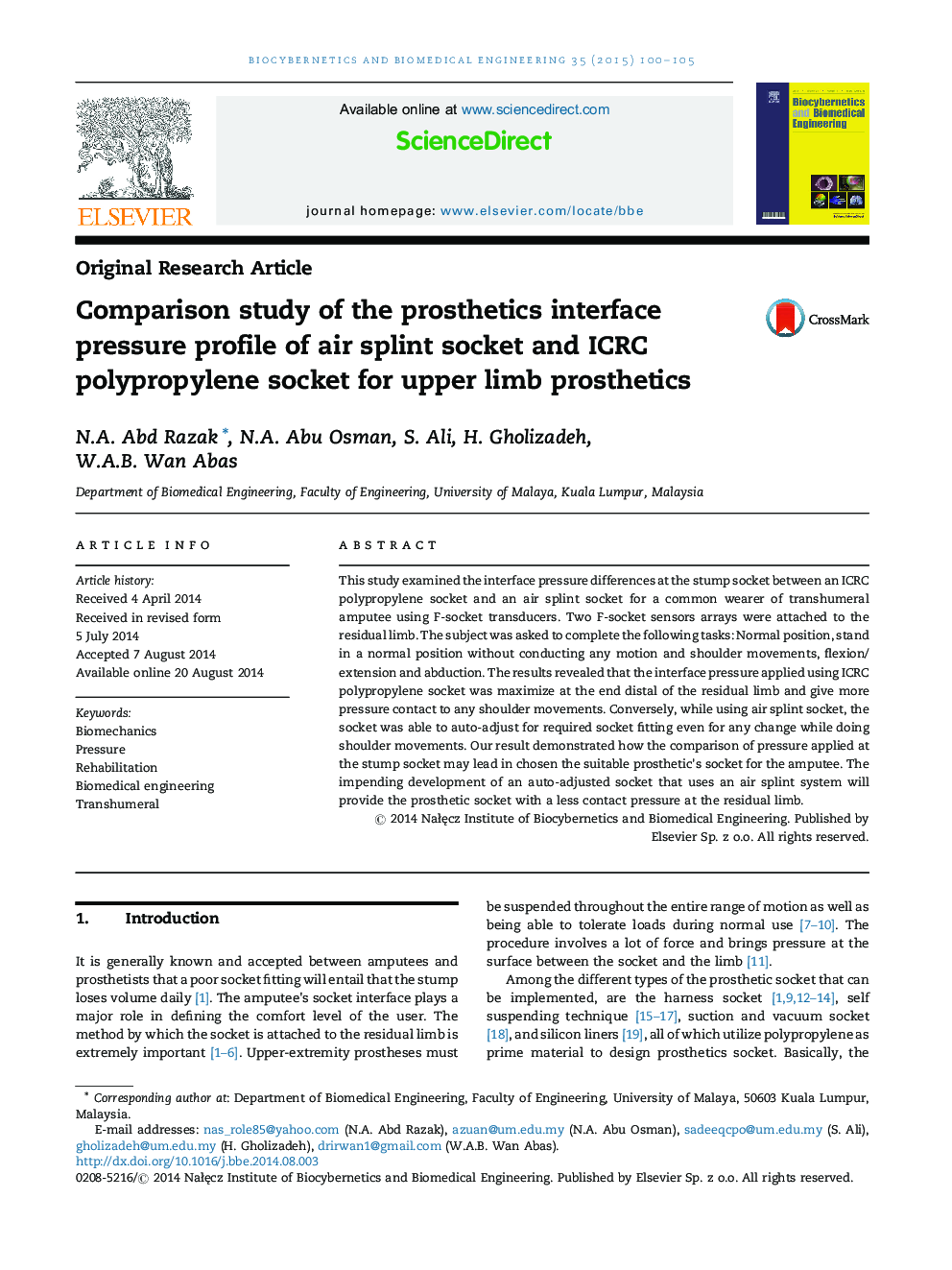| Article ID | Journal | Published Year | Pages | File Type |
|---|---|---|---|---|
| 5200 | Biocybernetics and Biomedical Engineering | 2015 | 6 Pages |
This study examined the interface pressure differences at the stump socket between an ICRC polypropylene socket and an air splint socket for a common wearer of transhumeral amputee using F-socket transducers. Two F-socket sensors arrays were attached to the residual limb. The subject was asked to complete the following tasks: Normal position, stand in a normal position without conducting any motion and shoulder movements, flexion/extension and abduction. The results revealed that the interface pressure applied using ICRC polypropylene socket was maximize at the end distal of the residual limb and give more pressure contact to any shoulder movements. Conversely, while using air splint socket, the socket was able to auto-adjust for required socket fitting even for any change while doing shoulder movements. Our result demonstrated how the comparison of pressure applied at the stump socket may lead in chosen the suitable prosthetic's socket for the amputee. The impending development of an auto-adjusted socket that uses an air splint system will provide the prosthetic socket with a less contact pressure at the residual limb.
